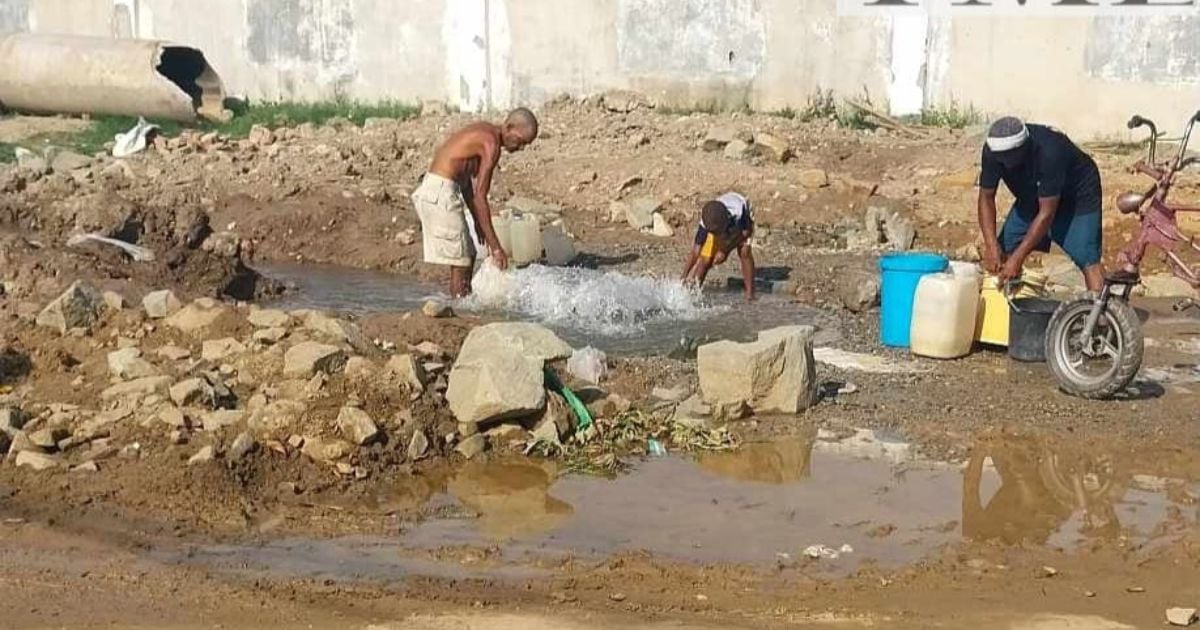As the Oropouche virus continues to ravage the residents of Santiago de Cuba, claiming at least one victim, another threat has further complicated the already critical epidemiological situation in the eastern region. It has been confirmed that two serotypes of the dengue virus are circulating, potentially leading to severe forms of the disease.
The Provincial Department of Vector Surveillance and Control issued an alert on Friday regarding the presence of two variants of the dengue virus. This comes at a time when "the territory shows a high infestation of the transmitting agent," particularly in the main municipality, Palma Soriano, Contramaestre, Mella, and San Luis, where most cases of the arboviral disease are reported.
Alfredo Cintra Guerra, head of the department, told the state-run newspaper Sierra Maestra that "the circulation of two dengue virus serotypes has been confirmed," warning that there is a "high probability of severe forms of the disease if preventive measures are not applied in time."
According to Cintra Guerra, "actions are being taken in communities to eliminate small dumps, leaks, obstructions, and other conditions that favor mosquito proliferation."
Economic Constraints Hamper Effective Measures
Despite the seriousness of the situation, which worsens the already difficult health landscape in Santiago de Cuba, plagued by the Oropouche fever since early May, the newspaper's report admits that "current economic limitations prevent large-scale interventions."
Although "Public Health continues adulticide treatment (fumigation) and focal treatment in the homes of those with non-specific febrile syndrome and in nearby buildings, as well as in areas with dengue transmission," the report states, "this is not enough to ensure the containment of arboviral diseases."
The newspaper urges the population to "act for collective health" from neighborhoods, homes, and workplaces, but does not explain what resources people have to do so if the State itself uses "economic limitations" to justify its ineffectiveness in curbing both epidemic outbreaks.
The director of Vector Surveillance and Control mentioned that "the low tank remains the most frequent deposit in the detection of breeding sites" and warned about the increase of artificial breeding sites in homes, such as empty bottles, cans, and uncovered tires filled with water where the Aedes mosquito reproduces.
He added that the sanitation of yards and other residential areas is inadequate.
The report reminded that "severe dengue can be fatal" and that "children, pregnant women, chronic patients, and the elderly are the most at risk."
The article advised that "every precaution is essential to protect the integrity and well-being of our families," listing actions to prevent the spread of the virus: eliminating objects that could become breeding sites, trimming overgrown areas, creating trenches to avoid rainwater accumulation, not dumping waste in public areas, and seeking medical attention in case of fever.
Sierra Maestra stated that these measures would also prevent Oropouche fever and avoid "two epidemics overshadowing the joy and recreation that summer usually brings."
Meanwhile, the government has yet to release figures on those diagnosed with the Oropouche virus, which has already spread to Cienfuegos and Mayabeque and could be present in other Cuban provinces.
The authorities of the regime also maintain complete silence on the deaths caused by this virus, although unofficial reports recently revealed the death of 22-year-old Santiago resident Richard Daniel Nieves Chaveco, who was hospitalized with symptoms of Oropouche.
The university student, a resident of the II Frente municipality, died three days after being admitted to the Ambrosio Grillo Hospital in Santiago de Cuba with symptoms of the virus.
Understanding the Health Crisis in Santiago de Cuba
In light of the ongoing health crisis in Santiago de Cuba, here are some frequently asked questions and answers to help understand the situation better.
What are the main viruses affecting Santiago de Cuba?
The main viruses affecting Santiago de Cuba are the Oropouche virus and two serotypes of the dengue virus.
What measures are being taken to combat these viruses?
Measures include community actions to eliminate mosquito breeding sites, fumigation, and treatment of affected areas and individuals, although economic constraints limit the effectiveness of these interventions.
Who are most at risk from severe dengue?
Children, pregnant women, chronic patients, and the elderly are the most at risk from severe dengue.
What can individuals do to help prevent the spread of these viruses?
Individuals can help by eliminating potential mosquito breeding sites, trimming overgrown areas, creating trenches to prevent water accumulation, not dumping waste in public areas, and seeking medical attention if they develop a fever.
